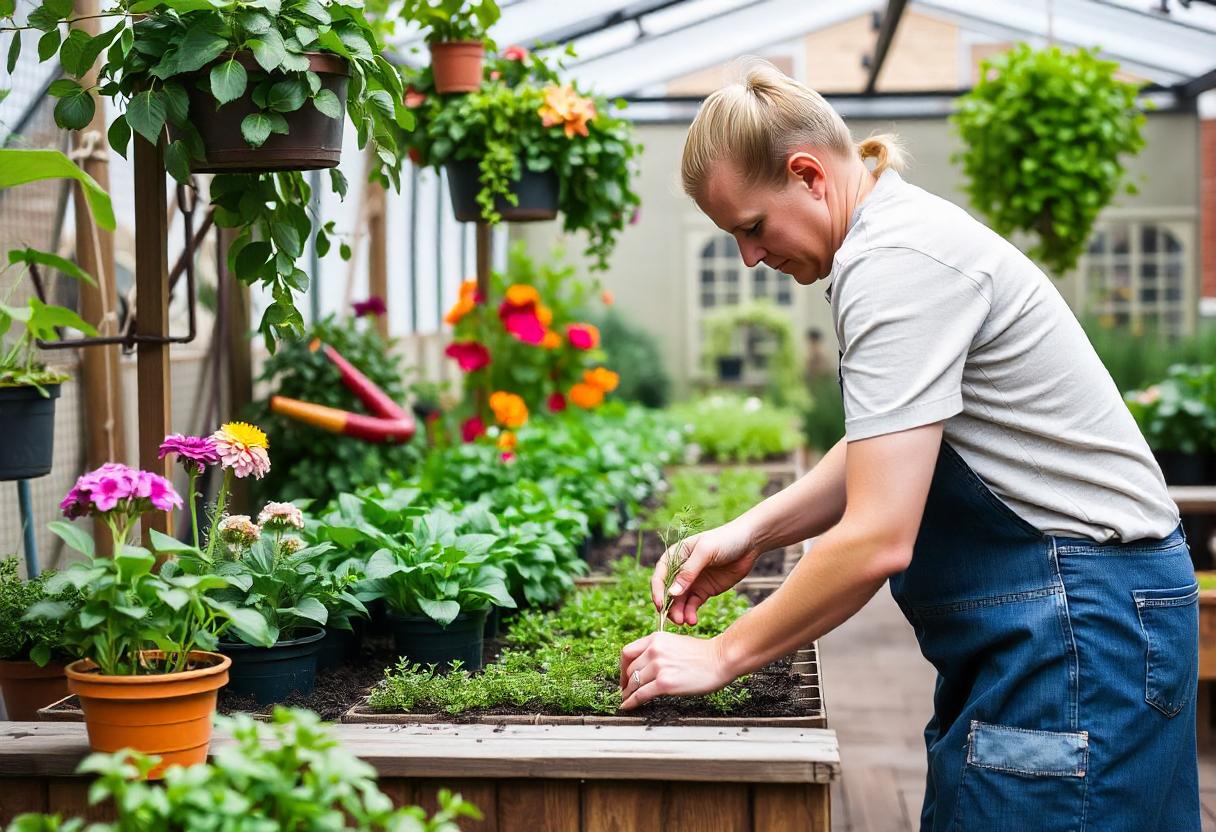
The Fundamentals of Horticulture
Horticulture encompasses the cultivation of fruits, vegetables, nuts, seeds, herbs, sprouts, mushrooms, algae, and non-food crops such as grass and ornamental trees and plants. It involves a range of activities including soil preparation, planting, cultivating, and harvesting. Horticulturists focus on enhancing plant growth, improving soil quality, and developing new plant varieties to meet the needs of consumers and the environment.
The Basics of Gardening
Gardening is a form of horticulture that involves growing and managing plants for personal use or aesthetic purposes. It can be done in various settings, including home gardens, community gardens, and urban spaces. Gardening practices include selecting appropriate plants, preparing the soil, planting, watering, and managing pests and diseases. The primary goals of gardening often include producing food, creating beautiful landscapes, and promoting relaxation and well-being.
Types of Gardening
Gardening can be categorized into several types based on the plants grown and the methods used. Some common types include:
- Vegetable Gardening: Focuses on growing edible plants such as tomatoes, carrots, and lettuce.
- Herb Gardening: Involves cultivating herbs like basil, mint, and rosemary for culinary or medicinal purposes.
- Flower Gardening: Centers on growing ornamental plants and flowers for aesthetic appeal.
- Container Gardening: Utilizes containers or pots to grow plants, making it suitable for small spaces or urban environments.
- Vertical Gardening: Employs vertical structures like trellises and wall planters to maximize space in small gardens.
Essential Gardening Tools
Effective gardening requires a set of essential tools, including:
- Trowel: For digging and planting.
- Pruners: For trimming and shaping plants.
- Hoe: For breaking up soil and removing weeds.
- Watering Can: For providing plants with water.
- Gloves: To protect hands from soil, thorns, and pests.
Soil and Composting
Healthy soil is critical for successful gardening. Soil preparation involves testing soil pH, adding organic matter, and ensuring proper drainage. Composting is a method of recycling organic waste to create nutrient-rich compost that improves soil structure and fertility. Compost can be made from kitchen scraps, yard waste, and other organic materials.
Pest and Disease Management
Managing pests and diseases is crucial to maintaining plant health. Strategies include using organic pesticides, introducing beneficial insects, and practicing crop rotation. Regular monitoring and early intervention can help prevent significant damage and ensure a successful gardening experience.
Sustainable Gardening Practices
Sustainable gardening aims to reduce environmental impact and promote biodiversity. Practices include using organic fertilizers, conserving water through efficient irrigation techniques, and choosing native plants that support local wildlife. Implementing these practices helps create a healthier ecosystem and reduces the reliance on chemical inputs.